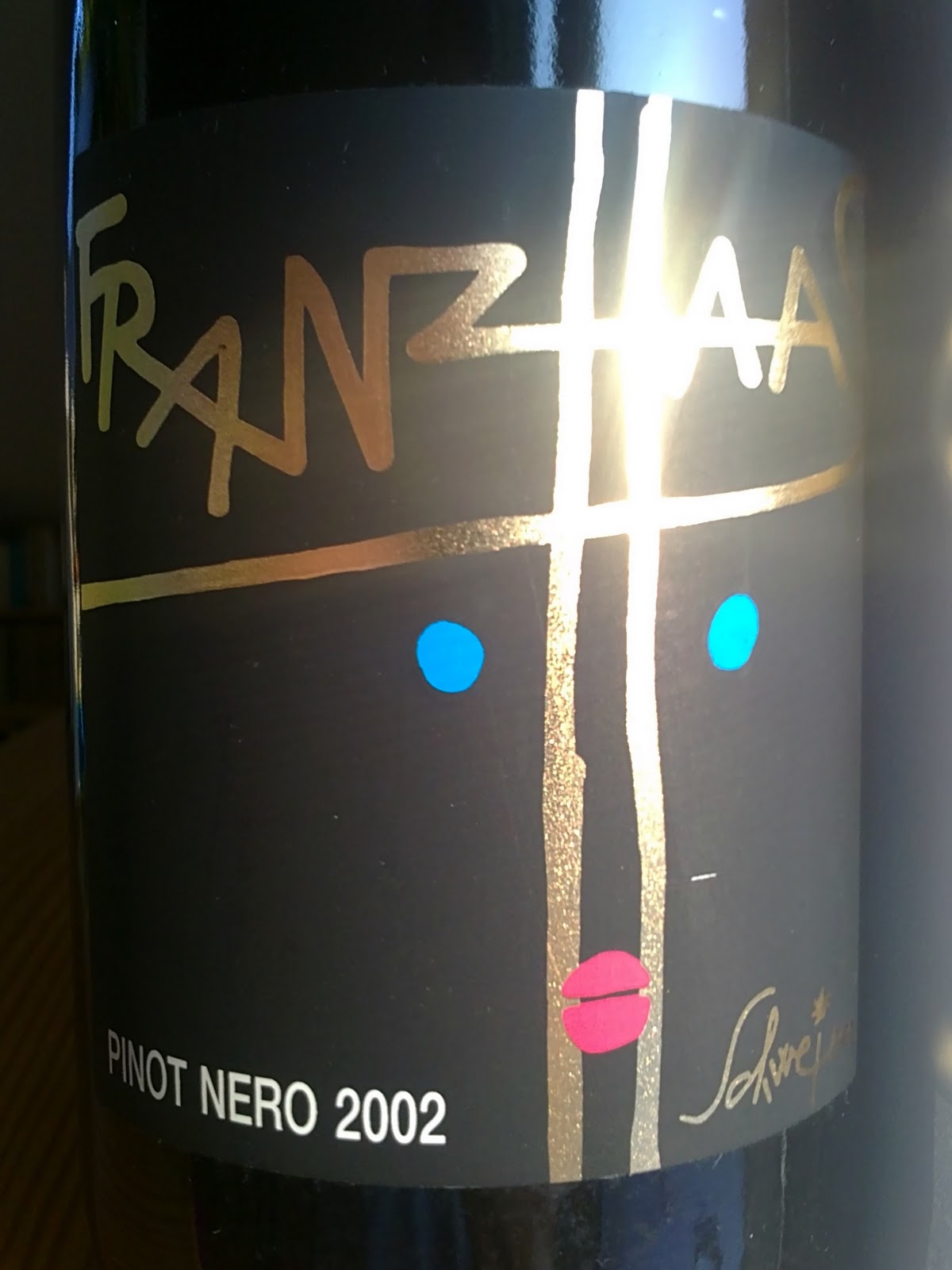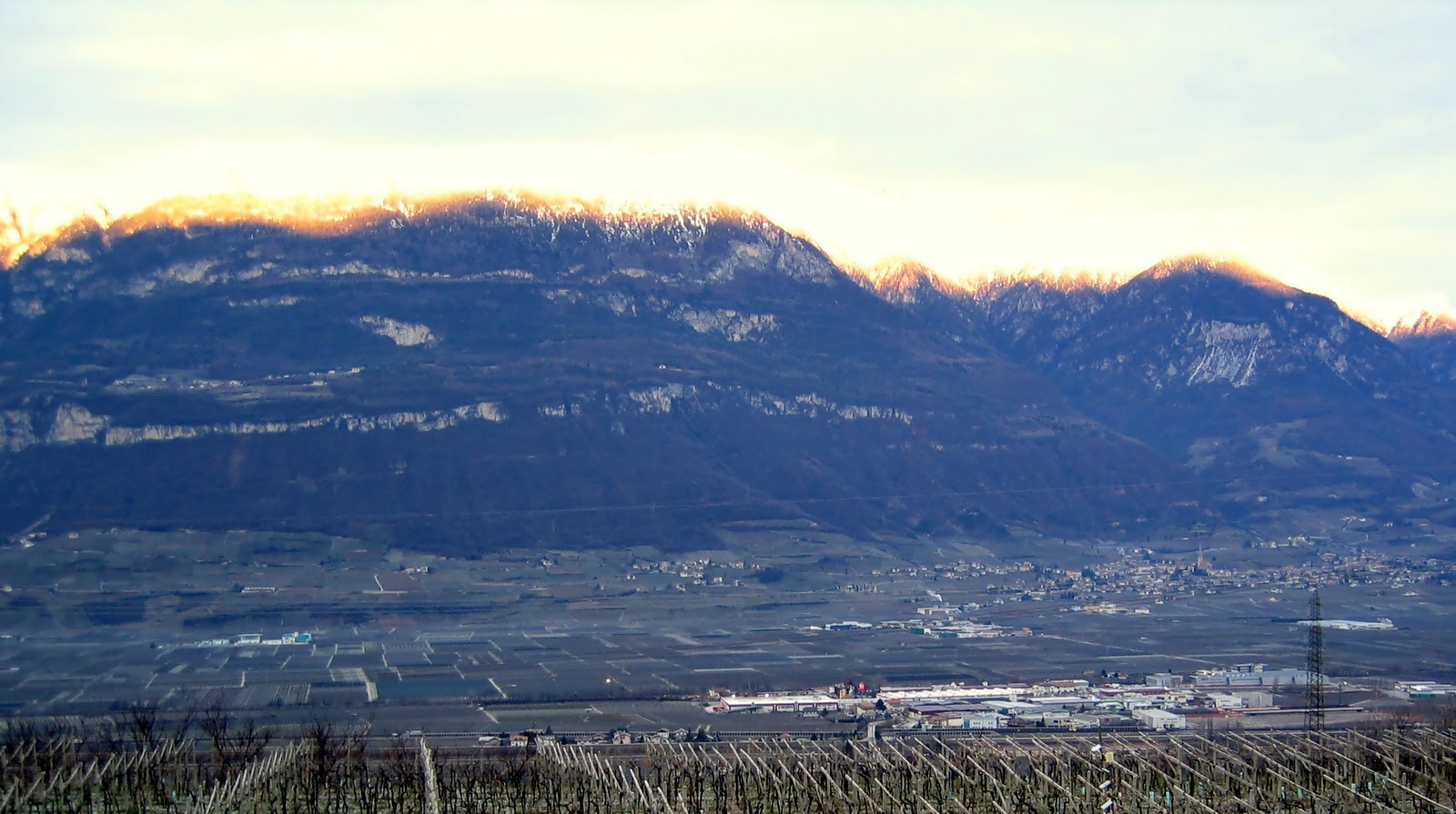I’ve roast a large 4-kg goose and needed a wine to go with those fatty flavours with plenty of umami. One match that I’ve enjoyed many times is an aged dry Riesling, but a 2002 one from Franken I picked from the cellar didn’t thrill, so eating the second half of the bird today with some added sauerkraut, I opted for a Pinot Noir.

This 8-year-old wine comes from the Alpine region of
Alto Adige/Südtirol, formally within Italy but German-speaking and historically a part of Austria.
Franz Haas is one of the leading producers there – in a region where the best wines are made by co-ops, he is one of the few private estates that can compete – and a long record of excellence with his Pinot Bianco and Pinot Nero. There are two bottlings of the latter and this, with a label drawn by local artist Riccardo Schweizer, is the more expensive
cru (the basic
PN has a b&w label).The colour is medium light and slowly maturing. The bouquet starts off a little meaty but with airing this quickly becomes cherries and red currents, with a bit of Pinot Noir flowery bonbon sweetness balanced by savoury notes. Really rather structured with plenty of acidity, this shows no evolved notes and has plenty of life ahead. Deliciously fruity but also with stature and seriousness.

Mason vineyards, the Adige valley, and the Alps west of the Adige hit by morning sun.
Alto Adige is home to some very exciting Pinot Noirs. It strikes me that it doesn’t get much recognition as such in the international press – there appears to be more focus on Germany and Austria whose Pinots, in my opinion, cannot match those of Alto Adige. With its variety of soils and exposures this region is well suited to growing many different grapes, but one area reputed for Pinot Noir is on the east bank of the Adige river (hence exposed west), at an altitude of around 300m, called Mason (or Mazzon). Haas’ Schweizer is partly sourced from here. Alto Adige Pinot Noirs can often err on the meaty, savoury side, but they have more vivid fruit, more balanced alcohol, and can apparently digest new oak better than their German or Austrian counterparts. Another really interesting characteristic is their good ageing potential: I think many can age better than good Burgundies. Many at age 8–10 are still showing young and punchy (like my Haas today), and I once had a superlative 15-year-old 1991 from
J. Hofstätter, the region’s other champion of Pinot Noir.
Continue Reading →